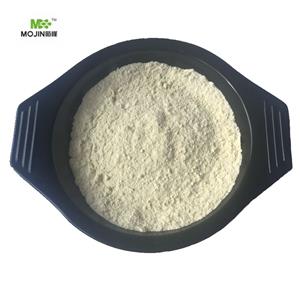
Esomeprazole sodium NEW
| Price | Get Latest Price |
| Package | 25KG |
| Min. Order: | 1KG |
| Supply Ability: | 50000KG/month |
| Update Time: | 2025-05-16 |
Product Details
| Product Name: Esomeprazole sodium | CAS No.: 161796-78-7 |
| EC-No.: 620-470-6 | Min. Order: 1KG |
| Purity: 99% | Supply Ability: 50000KG/month |
| Release date: 2025/05/16 |
| CAS: | 161796-78-7 |
| MF: | C34H36MgN6O6S2 |
| MW: | 713.12 |
| EINECS: | 620-470-6 |
| Product Categories: | Inhibitors;zjh;ACTIVE PHARMACEUTICAL INGREDIENTS;API;bc0001;161796-78-7 |
| Mol File: | 161796-78-7.mol |
 | |
| Esomeprazole sodium Chemical Properties |
| Melting point | 156 °C (approx) |
| storage temp. | Inert atmosphere,Store in freezer, under -20°C |
| solubility | DMSO (Slightly, Sonicated), Methanol (Slightly), Water (Slightly) |
| form | Solid |
| color | Pale Beige to Brown |
| Stability: | Hygroscopic |
| Esomeprazole sodium Usage And Synthesis |
| Anti-ulcer drug | Esomeprazole Sodium is the sodium salt form of esomeprazole. It is a commonly used anti-ulcer drug, which was first successfully developed by the Swedish company Astra Zeneca first. It belongs to a proton pump inhibitor. The proton pump inhibitor is the primary choice for treating peptic ulcer, gastro-oesophageal reflux disease and other acid-related diseases. Currently commonly clinically used PPI include five kinds: omeprazole, lansoprazole, rabeprazole, pantoprazole and esomeprazole. As the first PPI, the omeprazole’s drug efficacy in treating acid-related diseases has been widely recognized. Esomeprazole is the S-isomer of omeprazole, which can reduce gastric acid secretion by specific targeting mechanism. It is the specific inhibitor for the proton pump inhibitor in the parietal cell. Owing to the metabolic advantage of esomeprazole, it has a higher bioavailability and more consistent pharmacokinetics than its counterpart, omeprazole sodium, increasing the drug that reaches the proton pump. Its role of gastric acid control is much better than other proton pumps inhibitors such as lansoprazole, pantoprazole, and rabeprazole. In animal experiments, this product has a dose-dependent inhibition of the Na+/K+ ATP enzyme activity of the isolated rabbit parietal cells with an IC50 of 60 μmol/L. Its efficacy is greater than omeprazole (IC50: 100 μmol/L). Meanwhile, esomeprazole sodium can inhibit histamine-induced 14C aminopyrine accumulation in isolated human parietal cells. Its effect intensity is 2 times of omeprazole. Intravenous or intestinal injections of esomeprazole sodium to the experimental fistulization rats can inhibit gastric acid secretion caused by histamine with the ED50 were 0.24 and 0.43 mg/kg, respectively. For omeprazole with the same way of injection, the ED50 is 0.30 and 0.68 mg/kg, respectively. Using esomeprazole sodium in the gut of pylorus ligated rats enteral use esomeprazole sodium can reduce the basic amount of secreted gastric acid with potency three times larger than that of omeprazole. The drug can prevent and treat the stress or alcohol-induced gastric damage of experimental rats, also can prevent and treat the gastric lesions induced by acetic acid and indomethacin. Its ED50 values ??were 1.6 and 5.5 mg/kg, respectively. From the above results, the efficacy on ulcers of esomeprazole is greater than that of omeprazole. In addition, experimental data has also shown that when esomeprazole sodium is combined with penicillin and clarithromycin, it can be effectively applied for treating the duodenal and peptic ulcers caused by H. pylori infection. The above information is edited by the Chemicalbook of Dai Xiongfeng. |
| Pharmacokinetics | After intravenous injection of 5mg/kg 14C-labeled esomeprazole sodium into the SD rats, the half-life of the plasma concentration for female rats is 7.3 h, and 17.4 h for female rats. It can be rapidly absorbed through oral administration. Its plasma level exhibits bimodal peaks at 1h and 4h after taking drugs, respectively. The biliary drainage experiments of rats found that the absorption process after administration have a duration of 24 h or more. The order of concentration of drug in different organs is as below: liver> kidney> lung> blood> fat. For oral administration, the drug is mainly excreted through feces. The pharmacokinetics curve of esomeprazole is linear. When increasing the dose, the AUCs and cmax concurrently increase, while tmax, CL and half-life still keep constant. Esomeprazole sodium has a relative low toxicity. LD50 of rat through oral administration is greater than 5g/kg. For intraperitoneal administration, the LD50 is also over 2.5g/kg. Canine can take a dose 10mg/kg dose per day continuously for 28 d with no obvious abnormalities observed. For rats subjected to continuous medication for 13 weeks at a dose of 80 mg/kg, all the physiological parameters were not changed. The toxicity amount is over 320 mg/kg. In general pharmacological experiments, this product has a extremely small effect on the cardiovascular and autonomic nervous system. It only has a slight effect on the central nervous system at high dosage. |
| Indications | For the treatment of Gastroesophageal reflux disease (GERD)-erosive reflux esophagitis. Used for long-term maintenance therapy for cured esophagitis patients to prevent recurrence. Symptomatic control of gastroesophageal reflux disease (GERD). Heartburn and combined with other appropriate antimicrobial therapy for totally eradication of Helicobacter pylori-induced gastric and duodenal ulcers. |
| Drug Interactions | Esomeprazole sodium can reduce the absorption of ketoconazole and itraconazole. When combined with the product, we should reduce the dosages of drugs metabolized by the enzyme CYP2C19 such as diazepam, citalopram, imipramine, clomipramine and phenytoin. When combined with the product or stop using this product, we should also monitor the plasma concentrations of phenytoin. No interaction between the product and the amoxicillin, quinidine or warfarin was observed. No need for dose adjustment when combined with clarithromycin. There is not too much clinical information of excess taking drug. But a single dose of 80 mg of this product has no adverse reactions. This product has no special antidote. |
| Dosage | This product should be swallowed with water, and cannot be taken after chewing or crushing. Adults: For treatment of erosive reflux esophagitis: 40mg per day. Continuously take for 4 to 8 weeks. For long-term maintenance therapy and prevention of relapse for cured esophagitis patients, the recommended dosage is 20mg per day. For symptomatic CORD without suffering from esophagitis: 20mg per day. Take it for 4 weeks (If fail to control the symptoms, the patient should subject to further observation). Once symptoms have been got controlled, then the can use the dosage as needed for controlling the future symptom, such as 20 mg per day. For the triple associated therapy used for Helicobacter pylori eradication, prevention and cure of duodenal ulcer caused by Helicobacter pylori, and also Helicobacter pylori-induced recurrence of peptic ulcer: 20mg, amoxicillin 1g and clarithromycin 500mg, 2 times a day, medication for 7d. For elderly patients or patients of mild or moderate hepatic impairment, there is no need for dosage adjustment. It should be concerned that the maximal dosage should not exceed 20 mg for patients with severely impaired liver function. Children and lactating women are not recommended for taking this drug. |
| Side effects | Common adverse reactions (incidence of 1% to 10%) include headache, abdominal pain, diarrhea, gastrointestinal disorders, flatulence, nausea and vomiting, and constipation. Other adverse reactions (incidence of 0.1% to 1%) include dermatitis, itching, hives, dizziness, and dry mouth. |
| Precautions | Patients who are allergic to Benzimidazole-class drug are not allowed to use esomeprazole sodium. Patients of rare hereditary fructose intolerance, glucose-galactose absorption dysfunction, sucrase-isomaltase deficiency, and also lactation women are not allowed to use this drug. Patients who have severe impaired liver or renal function, long-term treatment, malignant warning before using, and pregnant women should use with caution. When any warning symptoms (such as significant weight loss, recurrent vomiting, dysphagia, vomiting blood or black stools) happens, patients should be checked to exclude the possibility of malignant disorders (such as cancer) due to that treatment can worsen the symptoms and delay diagnosis. Long-term user should be regularly monitored. |
| Uses | Treatment of peptic ulcer, gastroesophageal reflux disease and other acid-related diseases. |
| Chemical Properties | Beige Solid |
| Uses | Esomeprazole sodium is a commonly used anti-ulcer drug. It was successfully developed by AstraZeneca for the first time. It is a proton pump inhibitor. The drug of choice for related diseases. (S)-Omeprazole is the (S)-enantiomer of Omeprazole (O635000) a gastric proton-pump inhibitor. (S)-Omeprazole is more potent that its (R)-enantiomer and is used in the treatment of gastroesophageal ref lux disease as well as gastrointestinal ulcers associated with Crohn's disease. |
| Brand name | Nexium (AstraZeneca). |
| Biological Activity | esomeprazole sodium (nexium) is the s-isomer of omeprazole and acts as a proton pump inhibitor and gastric antisecretory agent indicated for the short-term treatment of gastroesophageal reflux disease in patients with a history of erosive esophagitis. |
| Mode of action | Esomeprazole Sodium is the sodium salt of the S-isomer of omeprazole, with gastric proton pump inhibitor activity. In the acidic compartment of parietal cells, esomeprazole is protonated and converted into the active achiral sulfenamide; the active sulfenamide forms one or more covalent disulfide bonds with the proton pump hydrogen-potassium adenosine triphosphatase (H+/K+ ATPase), thereby inhibiting its activity and the parietal cell secretion of H+ ions into the gastric lumen, the final step in gastric acid production. H+/K+ ATPase is an integral membrane protein of the gastric parietal cell. |
Packing &shipping&Payment
Shipping:by sea or by air
Payment:T/T,western union,moneygram
Packaging Details drum
Port:Tianjin
Lead Time :
| Quantity(Kilograms) | 1 - 10000 | >10000 |
| Est. Time(days) | 5 | To be negotiated |
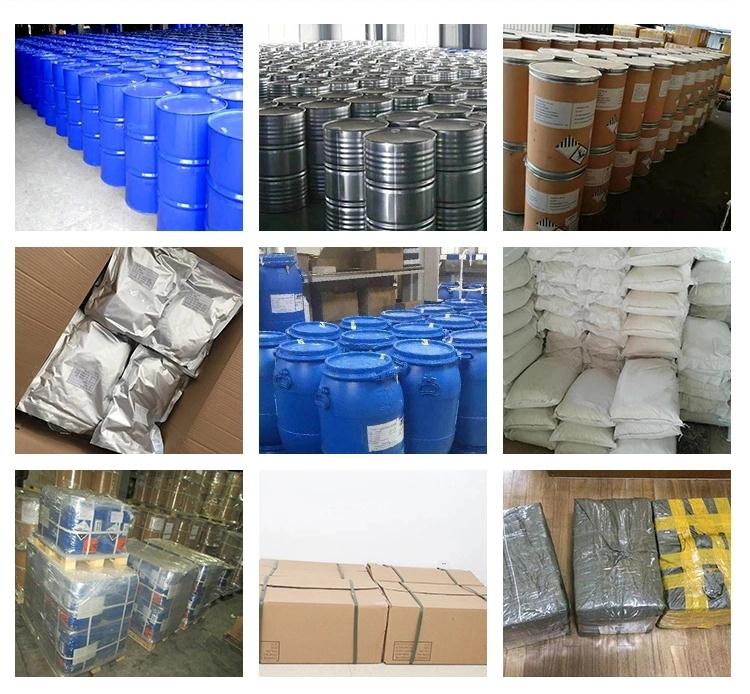
 Company information
Company information
Hebei Mojin Biotechnology Co., Ltd, Our company is a professional in 4'-Methylacetophenone,Levamisole hydrochloride ,N-Methylformamide and other chemical reagents research and development production enterprises. Our business covers more than 30 countries, most of the big customers come from Europe, America and other countries in the world, we can guarantee the quality and price. In recent decades, with the efforts of all employees, we have established many cooperative companies in shandong, henan, guangdong and other places. Our corporate purpose is based on the market, enhance the strength, take the road of scientific and environmental sustainable development, relying on the country. Technology r & d center, increase the investment in r & d, based on the domestic market, expand the international market, manufacturing quality products, sincere service to the society, into a modern, ecological, scientific and technological enterprise world.
 Advantage
Advantage
In stock
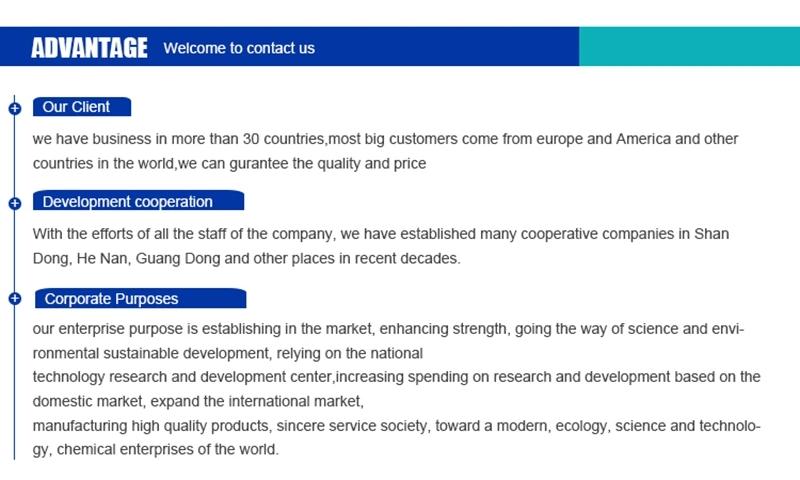
Company Profile Introduction
You may like
Recommended supplier
| Product name | Price | Suppliers | Update time | |
|---|---|---|---|---|
| $5.00/1KG |
VIP1Y
|
Wuhan JiyunZen Tech Co., Ltd.
|
2025-05-08 | |
| $61.00/10mg |
VIP5Y
|
TargetMol Chemicals Inc.
|
2025-04-30 | |
| $10.00/1KG |
VIP7Y
|
Hebei Chuanghai Biotechnology Co., Ltd
|
2024-11-28 | |
| $0.00/1kg |
VIP2Y
|
Hangzhou Hyper Chemicals Limited
|
2024-07-30 | |
| $10.00/1kg |
VIP2Y
|
Henan Fengda Chemical Co., Ltd
|
2024-04-29 | |
| $0.00/1kg |
VIP2Y
|
Shaanxi TNJONE Pharmaceutical Co., Ltd
|
2024-04-19 | |
| $135.00/1kg |
Anhui Yisheng Technology Co., LTD
|
2023-01-13 | ||
| $80.00/1KG |
Hebei Ningnan Trade Co. LTD
|
2022-11-02 | ||
| $10.00/1kg |
Hebei Linwo New Material Technology Co., LTD
|
2022-06-29 | ||
| $0.00/1kg |
VIP6Y
|
Shaanxi Dideu Medichem Co. Ltd
|
2022-06-01 |
- Since: 2017-12-08
- Address: 1013, Building B, CR Wanda Plaza, Qiaoxi District, Shijiazhuang City, Hebei Province, China
+86-13288715578
sales@hbmojin.com



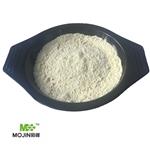



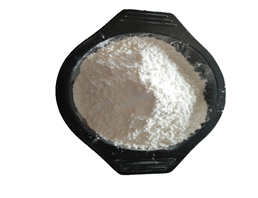



 Japan
Japan